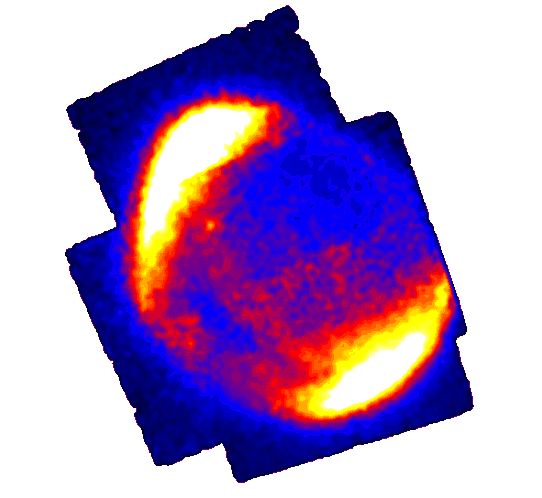This supernova must have been spectacular. Ironically, its brightness as seen from Earth may also explain why the remnant is so hard to see. It seems to have been in a region poor in dust and gas. Its expansion remnants were only detected by radio telescopes in the 1960s.
Contrast this with SN 1054, the Crab supernova. It was more modest, at least partly from dimming caused by the intervening interstellar dust and gas.
X-ray false-color image of SN 1006 showing the blast wave.


To: MozartLover; Joan912; NovemberCharlie; snowfox; Dawgsquat; viligantcitizen; theDentist; ...
2 posted on
03/16/2003 11:59:14 PM PST by
petuniasevan
(cogito, ergo spud: I think, therefore I yam...)
To: petuniasevan
Thanks for the ping. Interesting commentary. Where are these comments recorded?
To: petuniasevan
Mind-boggling - to actually be able to photograph the shock wave!
5 posted on
03/17/2003 4:42:25 AM PST by
GodBlessRonaldReagan
(where is Count Petofi when we need him most?)
To: petuniasevan
Great images of a shockwave! Good job APOD! My favorite site!
FreeRepublic.com is powered by software copyright 2000-2008 John Robinson




